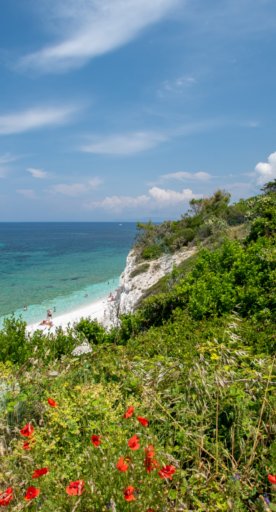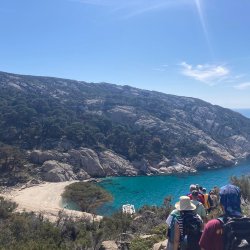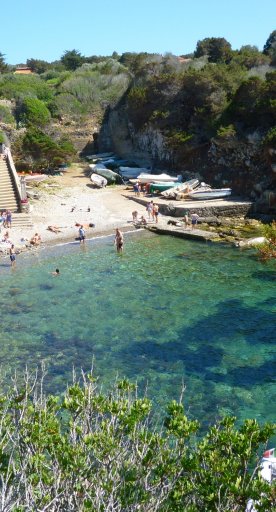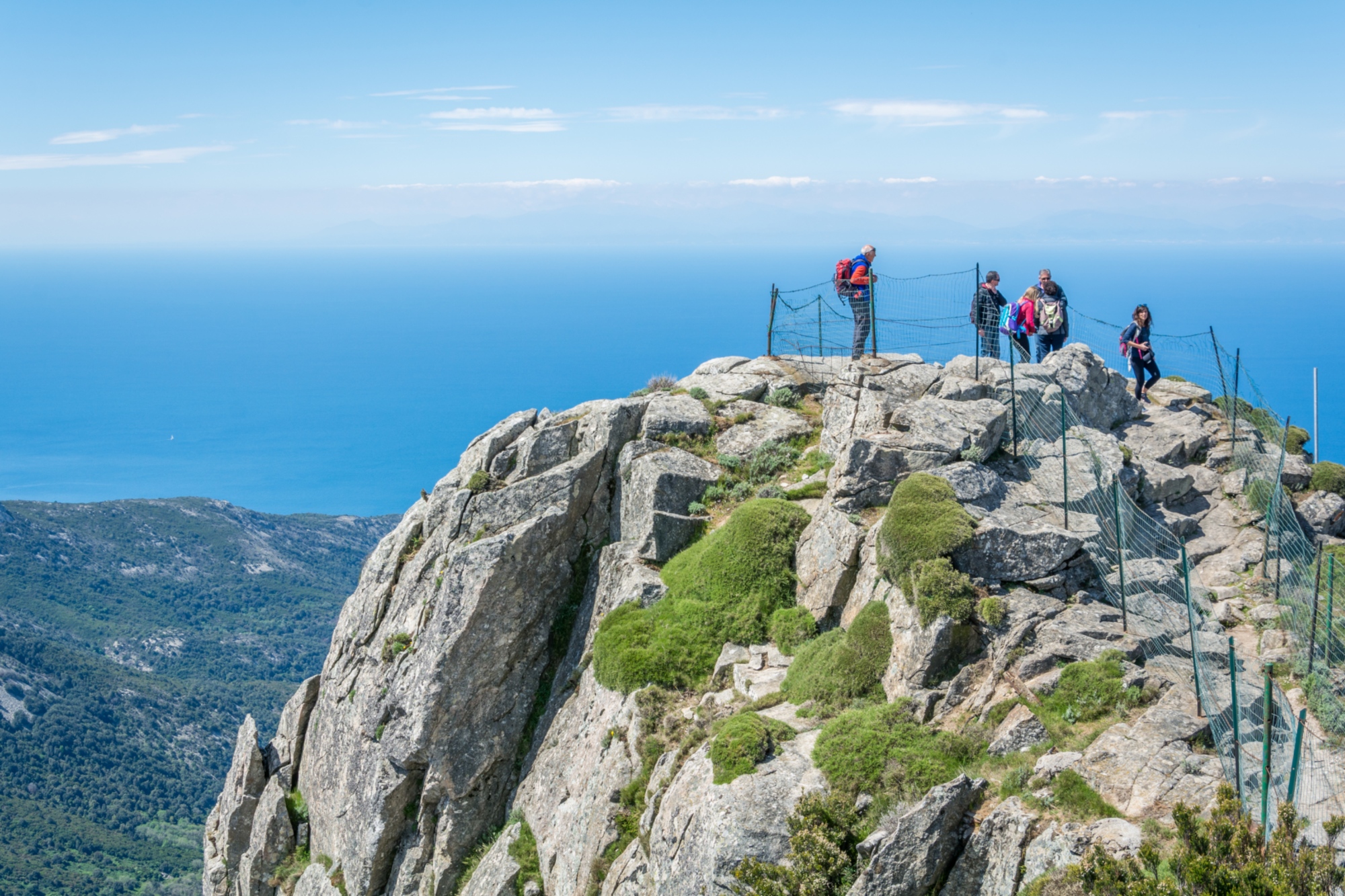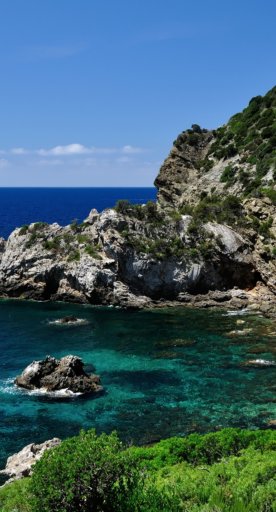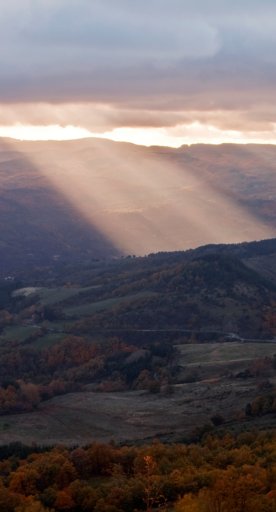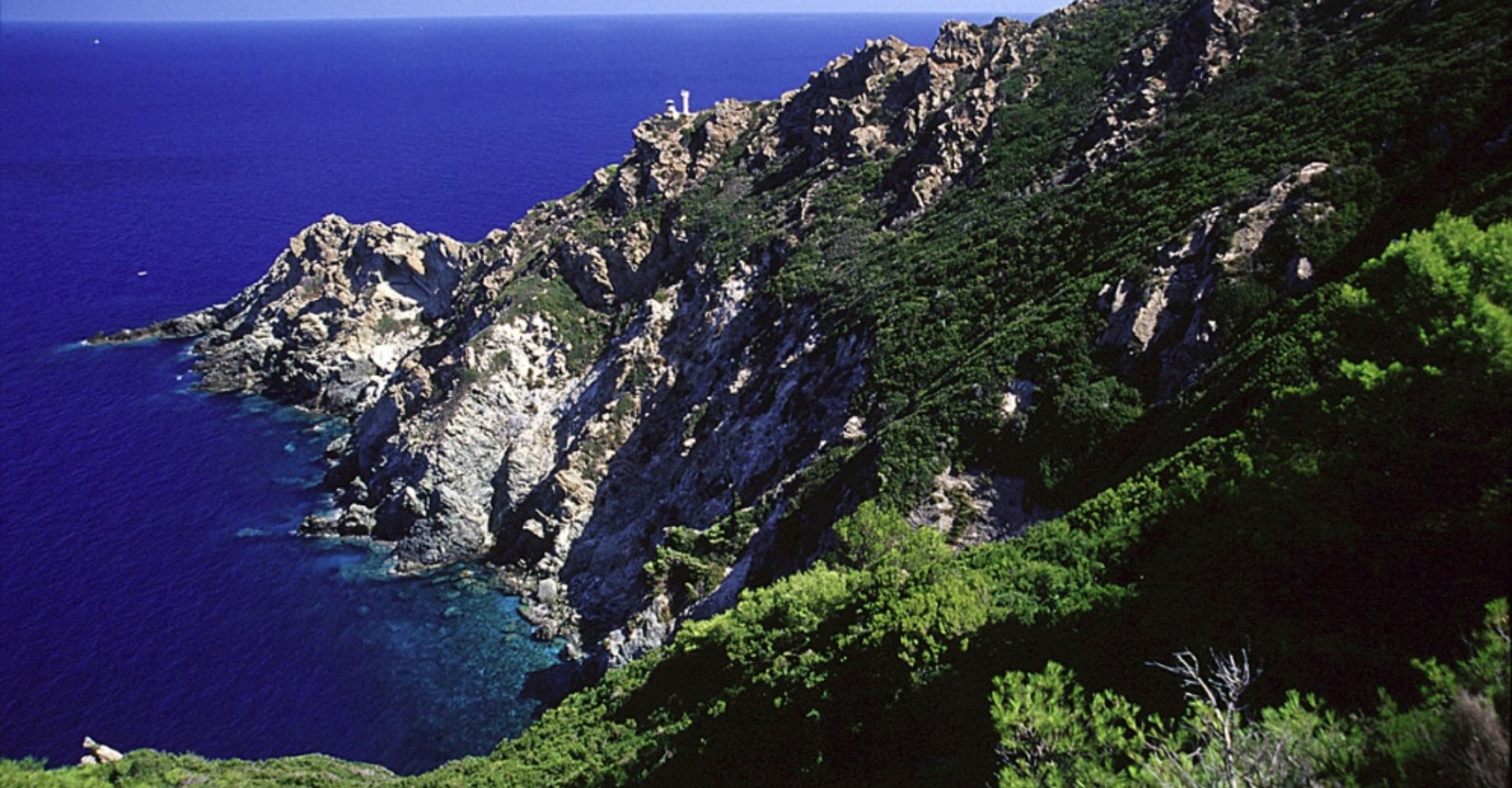
Gorgona island
The smallest island in the Tuscan Archipelago
The island of Gorgona can be found in the sea in front of Livorno, the smallest island in the Tuscan Archipelago. It's almost entirely mountainous and richly covered by typical Mediterranean scrub.
Part of the island is currently home to a penal colony, built as a branch of that of Pianosa, in 1869.
Access is allowed to all, but strictly regulated.
The Archipelago National Park has recently expanded the number of people admitted to the island on a daily basis, bringing the number of visitors up to a maximum of 100 people per day, excluding residents and service personnel of the prison administration. You can make a reservation up to a week before the date of the planned excursion, in order to send names to the penitentiary administration.
A little history
Gorgona, called Urgon in ancient times, was probably founded by the Etruscans and then we know it was inhabited by the Romans, as evidenced by the remains of a building on the Piano dei Morti.
In medieval times, it was occupied by monks who founded Benedictine and Cistercian monasteries.
In 1283, the island became part of the Maritime Republic of Pisa, who built the Old Tower. Later, in 1406, it was occupied by the Medici family who we can thank for the fortifications.
It later returned to the property of the Carthusian monks, who remained there until 1777. The Grand Duke Pietro Leopoldo then took back the island and tried to repopulate it, but without success. The prison was first established by the Grand Duke of Tuscany. It continued under the Kingdom of Italy, signing a contract in 1861 with the locals that remains valid even today. The agreement was that the locals conceded a part of the island, so long as the prison took care of all their essential needs.
Gorgona, called Urgon in ancient times, was probably founded by the Etruscans and then we know it was inhabited by the Romans, as evidenced by the remains of a building on the Piano dei Morti.
In medieval times, it was occupied by monks who founded Benedictine and Cistercian monasteries.
In 1283, the island became part of the Maritime Republic of Pisa, who built the Old Tower. Later, in 1406, it was occupied by the Medici family who we can thank for the fortifications.
It later returned to the property of the Carthusian monks, who remained there until 1777. The Grand Duke Pietro Leopoldo then took back the island and tried to repopulate it, but without success. The prison was first established by the Grand Duke of Tuscany. It continued under the Kingdom of Italy, signing a contract in 1861 with the locals that remains valid even today. The agreement was that the locals conceded a part of the island, so long as the prison took care of all their essential needs.
What to see in Gorgona
Excursions to the island can only be made with a guide and it's not possible to move around individually.
The trekking itinerary of about 7km, can only be covered if you are equipped with the correct shoes. There are no water sources inside the park, so it is important to be bring your own supply.
The main center of the island consists of a historic fishing village where about seventy people live. Along the coast line, there are charming inlets and bays such as Costa dei Gabbiani and Cala Scirocco, where the Grotta del Bue Marino opens up, once a refuge for monk seals.
On the island, there are also two fortresses, by the Medicis and Pisans.
Further upstream, you can visit Villa Margherita, built on the remains of ancient Etruscan-Roman settlements, today the site of the prison.
The blue sea that surrounds the island is rich in variety of marine species. This is thanks to the protection ensured by the penal colony, and the protection of the Park. For this reason, the waters around Gorgona are continuously studied, the island is in fact in the heart of the International Cetacean Sanctuary, where you can admire dolphins and whales.
The Tuscan Archipelago is full of gem-like islands surrounded by a glittering sea: 3 days to discover the other islands!
Excursions to the island can only be made with a guide and it's not possible to move around individually.
The trekking itinerary of about 7km, can only be covered if you are equipped with the correct shoes. There are no water sources inside the park, so it is important to be bring your own supply.
The main center of the island consists of a historic fishing village where about seventy people live. Along the coast line, there are charming inlets and bays such as Costa dei Gabbiani and Cala Scirocco, where the Grotta del Bue Marino opens up, once a refuge for monk seals.
On the island, there are also two fortresses, by the Medicis and Pisans.
Further upstream, you can visit Villa Margherita, built on the remains of ancient Etruscan-Roman settlements, today the site of the prison.
The blue sea that surrounds the island is rich in variety of marine species. This is thanks to the protection ensured by the penal colony, and the protection of the Park. For this reason, the waters around Gorgona are continuously studied, the island is in fact in the heart of the International Cetacean Sanctuary, where you can admire dolphins and whales.
The Tuscan Archipelago is full of gem-like islands surrounded by a glittering sea: 3 days to discover the other islands!
